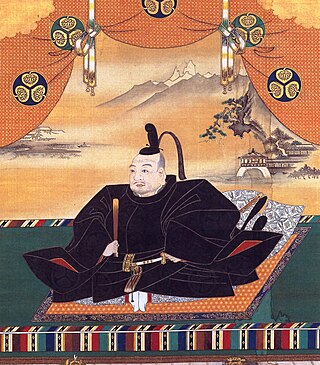
Tokugawa Ieyasu was the founder and first shōgun of the Tokugawa Shogunate of Japan, which ruled from 1603 until the Meiji Restoration in 1868. He was one of the three "Great Unifiers" of Japan, along with his former lord Oda Nobunaga and fellow Oda subordinate Toyotomi Hideyoshi. The son of a minor daimyo, Ieyasu once lived as a hostage under daimyo Imagawa Yoshimoto on behalf of his father. He later succeeded as daimyo after his father's death, serving as a vassal and general of the Oda clan, and building up his strength under Oda Nobunaga.
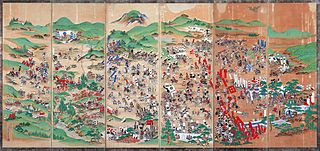
The Battle of Sekigahara was a decisive battle on October 21, 1600 in what is now Gifu prefecture, Japan, at the end of the Sengoku period. This battle was fought by the forces of Tokugawa Ieyasu against a coalition of Toyotomi loyalist clans under Ishida Mitsunari, several of which defected before or during the battle, leading to a Tokugawa victory. The Battle of Sekigahara was the largest battle of Japanese feudal history and is often regarded as the most important. Toyotomi's defeat led to the establishment of the Tokugawa shogunate.

Ishida Mitsunari was a Japanese samurai and military commander of the late Sengoku period of Japan. He is probably best remembered as the commander of the Western army in the Battle of Sekigahara following the Azuchi–Momoyama period of the 16th century. He is also known by his court title, Jibu-no-shō (治部少輔).
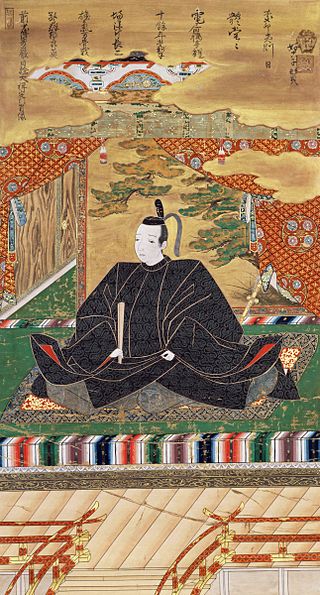
Kobayakawa Hideaki was the fifth son of Kinoshita Iesada and a nephew of Toyotomi Hideyoshi. He was gained the rank of Saemon no Kami (左衛門督) or in China Shikkingo (執金吾) at genpuku and held the court title of Chūnagon (中納言), Hideaki was also called Kingo Chūnagon (金吾中納言).

Fushimi Castle, also known as Momoyama Castle or Fushimi-Momoyama Castle, is a Japanese castle located in Fushimi Ward, Kyoto.

Uesugi Kagekatsu was a Japanese samurai daimyō during the Sengoku and Edo periods. He was the adopted son of Uesugi Kenshin and Uesugi Kagetora’s brother in law.

Shimazu Yoshihiro was the second son of Shimazu Takahisa and the younger brother of Shimazu Yoshihisa. Traditionally believed to be the 17th head of the Shimazu clan, he was a skilled general during the Sengoku period who greatly contributed to the unification of Kyūshū.
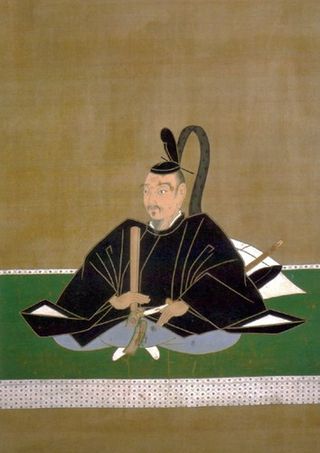
Torii Mototada was a Japanese Samurai and Daimyo of the Sengoku period through late Azuchi–Momoyama period, who served Tokugawa Ieyasu. Torii died at the siege of Fushimi where his garrison was greatly outnumbered and destroyed by the army of Ishida Mitsunari. Torii's refusal to surrender had a great impact on Japanese history; the fall of Fushimi bought Ieyasu some time to regroup his army and eventually win the Battle at Sekigahara.
The Sekigahara Campaign was a series of battles in Japan fought between the Eastern Army aligned with Tokugawa Ieyasu and the Western Army loyal to Ishida Mitsunari, culminating in the decisive Battle of Sekigahara. The conflict was sparked by a punitive expedition led by Ieyasu against the Uesugi clan in the northeastern Tōhoku region, providing Mitsunari with an opportunity to denounce Ieyasu in the name of the infant ruling taikō Toyotomi Hideyori while the Tokugawa troops were in the field.
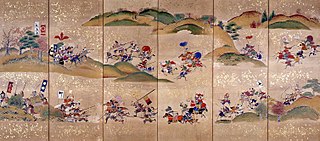
The Siege of Hasedō (長谷堂城の戦い) was one of a series of battles fought in the far north of Japan's main island of Honshū contemporaneous with the famous and decisive campaigns between Tokugawa Ieyasu and Ishida Mitsunari further south.

Oshi Domain was a feudal domain under the Tokugawa shogunate of Edo period Japan, located in Musashi Province, Japan. It was centered on Oshi Castle in what is now part of the city of Gyōda, Saitama.
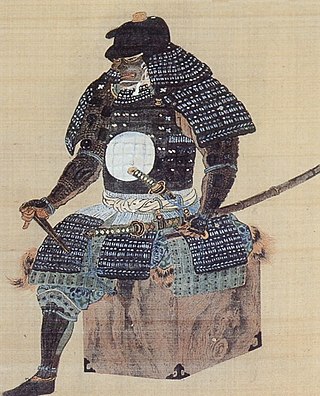
Satake Yoshinobu was a daimyō in Sengoku period and early Edo period Japan under the Tokugawa shogunate and the 19th head of the Satake clan and 1st daimyō of Kubota Domain in Dewa Province. His courtesy title was Sakonoeshōshō, later Ukyō-dayū and Jijū and his Court rank was Junior Fourth Rank, Upper Grade.

Matsudaira Ietada, also known as Tomomo no Suke was a Japanese samurai of the Sengoku period. He was the adoptive father of Matsudaira Tadayoshi, the fourth son of Tokugawa Ieyasu
Naitō Ienaga was a Japanese samurai of the Sengoku Period through Azuchi-Momoyama Period, who served the Tokugawa clan. He was the son of Naitō Kiyonaga. Ienaga served Tokugawa Ieyasu from a young age, and was famed for his skill with the bow. He assisted in the suppression of the Ikkō-ikki of Mikawa Province, and this earned him Ieyasu's trust.

Ōgaki Castle is a flatlands-style Japanese castle located in the city of Ōgaki, Gifu Prefecture, Japan. During the Sengoku period, Ōgaki Castle was home to several of Toyotomi Hideyoshi's most trusted generals and relatives; during the Edo period, it was home to the Toda clan, daimyō of Ōgaki Domain, who dominated parts of the province of Mino under the Tokugawa shogunate. Other names for the castle include Bi Castle and Kyoroku Castle.

Iwakitaira Castle is a hilltop-style Japanese castle located in the city of Iwaki, Fukushima Prefecture, in the Tōhoku region of Japan. It also called Ryūgajō Castle (龍ヶ城). Built in the early Edo period, it served as the headquarters for a succession of daimyō of Iwakitaira Domain under the Tokugawa shogunate. The site is now mostly on private lands, with only a small portion of the moats and ramparts remaining.

Numata Jakō also known as Hosokawa Maria was a Japanese noble lady of the Sengoku period. She was the wife of Hosokawa Fujitaka and mother of Hosokawa Tadaoki. She was best known for fighting and for accompanying Hosokawa Fujitaka in the siege of Tanabe during Sekigahara Campaign.

Lady Acha or Acha no Tsubone was a Japanese noble woman from the Sengoku period to the early Edo period. She was a concubine of Tokugawa Ieyasu, the founder of the Tokugawa shogunate. Due to her intelligence, Ieyasu entrusted her with management of the family's affairs, sending her to negotiate peace during the Siege of Osaka. Her contributions to the stabilization of the Tokugawa shogunate and service to the country were notable for the court; being enducted to the Junior First Rank of the Imperial Court the second highest honor that could be conferred by the Emperor of Japan.
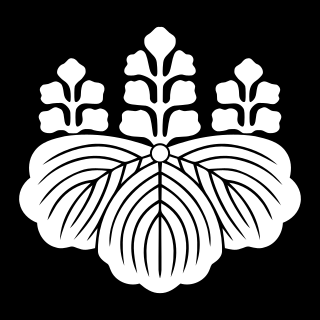
Lady Ōkurakyō or Ōkurakyō no Tsubone (大蔵局) was a Japanese noble woman and retainer of the Toyotomi clan during the Sengoku period. She was the wet nurse of Yodo-dono and later served her son Toyotomi Hideyori. She wielded great power within the Toyotomi family along with the Ono brothers, playing a crucial role before and during the Siege of Osaka.

















